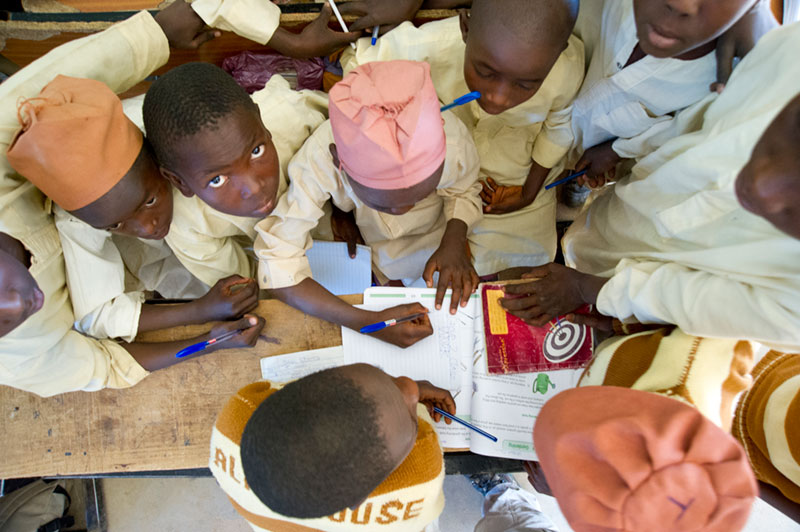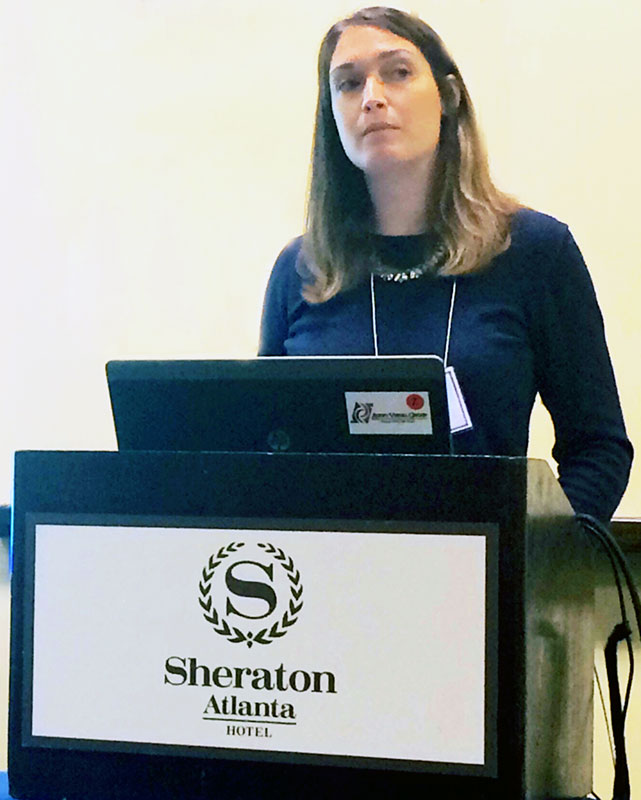AtlantaCombining behavioral insights with social emotional learning are essential to improved student achievements for school-aged children in conflict and crisis environments, according to experts on a panel at the Comparative and International Education Society conference on March 7.
Panelists at the session called “Using Behavioral Insights to Improve Learning and School Safety in Humanitarian and Development Contexts: Preliminary Findings and Potential New Directions” point to case studies from India, Kenya, Lebanon, Morocco, Nigeria and Timor-Leste, among other countries, that are leveraging behavior insights to reach education program targets.
Behavior insights—the emerging science that goes beyond traditional economics that analyzes how people make decisions and take actions—can play a role in complimenting existing programming, shaping effective policy and addressing future issues in the classroom, said panel experts.
“Why does the science of behavior matter?” asked Josh Martin, Vice President of Ideas42, an organization that applies behavioral science research to tackle complex social problems. “Addressing challenges and applying targeted low-cost interventions requires understanding psychological barriers that can have a detrimental impact on learning outcomes.”

Exposure to conflict can result in deep psychological trauma that can have long-lasting effects on children’s mental health and cognitive abilities. Many of these children are fleeing violence, having witnessed the destruction of their homes and even the killing of family members.
“When considering refugees in the humanitarian context and the extreme challenges they face that creates cognitive depletion, behavior insights are going to be extremely important to the kind of problems and solutions we are able to provide,” said Martin.
Integrating behavior insights in education programming design allows the development of effective and tailored intervention strategies to support students with specific psychosocial needs.
With more than 263 million children and youth out-of-school worldwide, analyzing barriers to education is needed. In conflict-affected countries, children face significant challenges in receiving a quality education–or an education at all. Lack of school infrastructure and sufficient learning materials, as well as ongoing safety and security concerns, keep the most vulnerable students out of the classroom.
Natan Last, Innovation Strategist on the Research and Development team at International Rescue Committee (IRC)’s Airbel Center, works closely with IRC technical units in health, education, among others, to spur innovation in humanitarian aid. By bringing together field staff, designers, strategists, researchers and technical experts, the Airbel Center aims to uncover innovative ideas that make positive impact.
“We need the spur of innovation now more than ever,” said Last. “To demonstrate higher impact but to help solve enormous global challenges in delivering interventions, like the increasing urgency of the humanitarian crisis–especially in education.”
“Through better design, we can gain a clearer understanding of behavior in context that has the potential to lead to promising interventions and solutions,” said Last. “And lean from failure to success.”
Innovative education interventions leveraging social emotional learning
Julia Finder, Technical Manager, Education in Conflict at Creative Associates International, presented a framework that Creative developed to provide at-risk youth in both humanitarian and development contexts with support needed to positively change social behaviors.
“Context is extremely important when examining how to best support social emotional learning and social behavior change,” said Finder.
To demonstrate the framework, she provided case studies based on Creative’s projects in Nigeria, Honduras, Tajikistan, Timor-Leste and Morocco, among other countries.

To properly address social behavior change, understanding what impacts children and youth is essential.
“When designing a new project, there are several key technical questions Creative aims to address,” she said.
Among the technical issues Creative seeks to address are:
- What are the behaviors are we seeking to change?
- What conditions in the school environment lead to positive and also negative social behavior?
- What type of support is realistic, given the context?
- Who can deliver these interventions?
- How will this be sustainable one the project ends?
Targeted interventions in the school, the community and home all play a role in supporting social emotional learning.
Creative applies a “whole child, whole teacher, whole school, and whole system approach,” to address critical supply and demand factors that affect learning, teaching, management, parental participation and responsiveness to children’s needs.
“Each entity play’s a critical role in providing holistic support and they must all interact together to be effective in changing social behavior,” according to Finder.
Creative applies a multi-tiered approach in design, where the least at-risk learners are at the top and the most at-risk learners are at the bottom. This approach helps assess and identify individual need and tailors intervention to encourage stability, learning and growth.
Finder demonstrated how this approach works by applying it to the Nigeria Education Crisis Response project, which is funded by the U.S. Agency for International Development and implemented by Creative, IRC and local partners.
In Northern Nigeria, more than 2.2 million people—including more than 1 million school-aged children—have been displaced from their homes due to the Boko Haram insurgency.
In addition to psychosocial support, the project has established non-formal learning centers that provide literacy and math education and, for older youth, livelihoods training as many families have been uprooted from their homes and sources of income.
“Once we apply the framework and assess individual needs, we then devise a plan,” said Finder. “Depending on the changes we’re observing with the students, we then change the dosage and frequency of support.”
Looking through the multi-tiered approach lens helps to tailor specific interventions.
When applying the multi-tiered approach in the targeted schools, findings emerged that female students were not staying in school and not completing their education.
Creative provided additional support and training for the girls in order to achieve the same outcomes as their male peers.
Moving forward, Finder emphasized the need for additional research to promote behavior change.
“We need to build a further understanding on what support is available and how we can effectively design measurement tools to isolate specific interventions to determine their individual impact,” said Finder. “And we want to support communities in identifying what skills they need to ensure they can provide continual support to at-risk children and youth.”